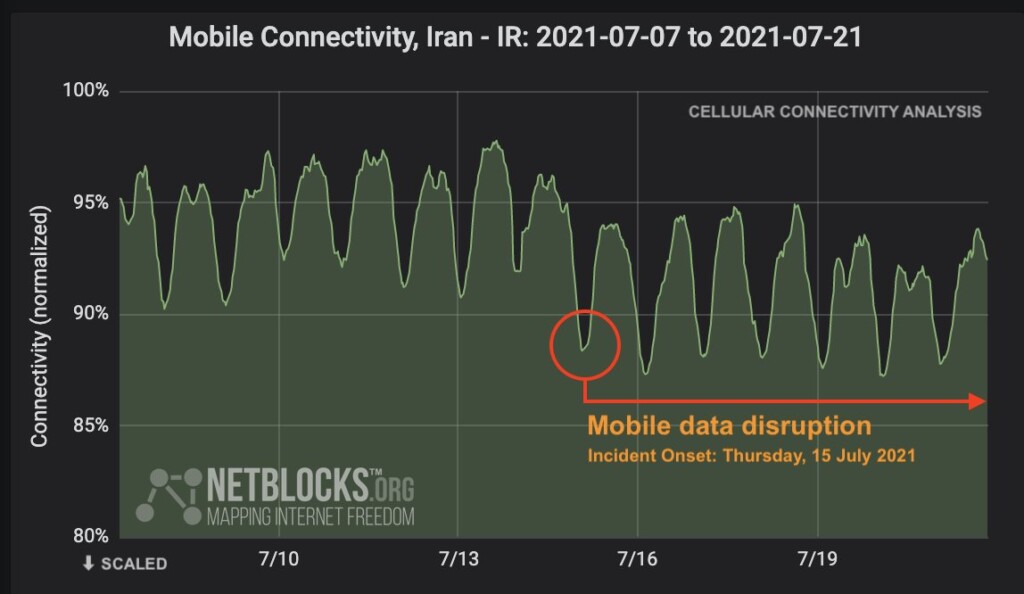
Internet Accessibility in Iran Remains Disrupted for Over 1 Week Now
- Violence has erupted in the Khuzestan region and the Iranian regime is cutting the internet.
- This comes along water shortages, power outages, and a general situation of decay.
- The problems have lasted over a week now and there are no signs of abating.
There’s an ongoing internet service interruption in Iran that started on Thursday, 15 July 2021, and it is still holding. The connectivity disruption is being closely monitored by NetBlocks, the international internet accessibility observatory. Of course, the are numerous user reports on social media confirming the problem.
At this moment, the percentage of Iranians who appear to remain blocked from the outside world is around 4%, which is an indication that the government is approaching the case in a highly targeted manner. More specifically, the shortages hit Khuzestan province, including Ahvaz, Ramhormoz, and Susangerd.
The problem in Khuzestan, a historically troubled province sitting between Iran and Iraq, has to do with severe water shortages that have pushed people to protest on the streets, demanding the government to do more to help them. Instead of responding with adequate measures that could alleviate the people's thirst, the theocratic establishment has responded somewhat erratically, sending a couple of water tankers to the region, but not nearly enough to cover the problems induced by the hot temperatures and the lengthy droughts. The dire picture is completed by having the existing dirty tap water shut off, dealing with frequent power outages that shut pumps down and letting “water mafias” exploit river water unobstructed.
The water crisis protests have turned violent, and Al Jazeera reports that at least three civilians have died so far, and 14 police officers were injured. Two of the protesters were shot by the police, and one was hit by a car and succumbed to his injuries later. The Iranian state also reports about a police officer having been shot dead by agitators. More than a week into the demonstrations, the violence isn’t showing any signs of easing down, with both sides engaging in deadly acts against each other.
Wherever there are protests and violent crackdowns, there are internet interruptions that aim to undermine the communications and the coordination of the protesters. From a technical perspective, the disruption is working excellently because it’s imposed at the cellular network layer. This means that it cannot be circumvented - not by using specialized software or VPN tools. As such, whatever news, images, and information come from the region, they do thanks to adjacent users or short windows of opportunity involuntarily given to Khuzestan-based netizens.







